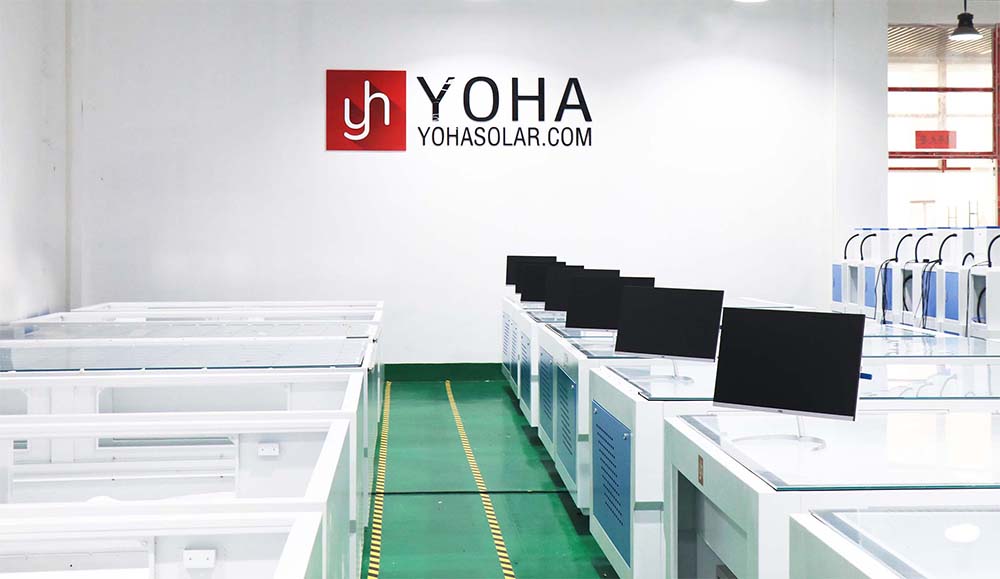In the PV industry's journey towards the Terawatt Era, solar production equipment and manufacturing lines are undergoing a silent revolution. While the industry focuses on breaking cell efficiency records and wafer thinning, a crucial player is quietly reshaping manufacturing logic: PV inspection equipment. It has evolved from a traditional "quality gatekeeper" into an intelligent hub driving efficiency leaps across entire production lines, leveraging technological innovation to usher in a new era of leaner and more efficient PV manufacturing.
I. Efficiency Bottlenecks: The Hidden Constraints of Traditional Lines
Early PV manufacturing faced a triple efficiency dilemma:
- Lag of Post-Production Inspection: Defective components flowed into high-value downstream processes, causing rework and resource waste.
- Shackles of Human Dependency: Manual visual inspection suffered high escape rates (>15%) and limited production line takt time increases.
- Data Silos Dilemma: Process parameters, defect information, and equipment status remained isolated, leaving optimization without data-driven insights. Technological innovations in PV inspection equipment are precisely targeting these bottlenecks.
II. Technological Leap: The Threefold Evolution of Inspection Equipment
Evolution 1: From "Offline Sampling" to "Inline 100% Inspection" – Compressing Time and Space
- High-Speed Vision + AI Enablement: Deployment of inline PV inspection systems at key nodes (e.g., stringing, layup) enables millisecond-level detection of cell micro-cracks, ribbon misplacement, and material defects.
- 100% EL/IV End-of-Line Testing: Post-lamination module EL testers and IV testers screen for internal defects and calibrate power within 5 seconds, intercepting defective units before packaging.
- Yields: Defect interception shifted upstream, reducing downstream process waste by over 30%; Line First Pass Yield (FPY) increased to 99%+.
Evolution 2: From "Manual Image Review" to "AI Decision-Making" – Cognitive Upgrade
- Deep Learning-Driven Defect Recognition:
- Automatic localization of cracks, length quantification, and classification of finger breaks/poor soldering/contamination in EL images.
- AI analysis of IV curves for real-time diagnosis of soldering failures, PID risk, and diode faults.
- Closed-Loop Feedback System: Mapping defect types and location distributions back to upstream processes (e.g., feeding poor soldering patterns to stringer parameter adjustments).
- Yields: Quality inspection efficiency increased 5x; need for manual re-inspection reduced by 80%; process optimization cycles shortened by 50%.
Evolution 3: From "Single-Point Inspection" to "Data Hub" – Role Transformation
- Multi-Dimensional Data Fusion: Integrating EL defect maps, IV parameters, process temperature profiles, and equipment vibration spectra.
- Predictive Maintenance: Using inspection data anomalies (e.g., gradual blurring in EL images) to preemptively warn of laminator vacuum pump failures.
- Digital Twin Integration: Building virtual production line models to simulate the impact of parameter adjustments on yield.
- Yields: Equipment downtime reduced by 40%; batch losses due to process fluctuations decreased by 70%.
III. Efficiency Leap: Full-Chain Optimization Driven by Inspection Tech
- Manufacturing Cycle Acceleration: Inline inspection eliminates the time lag of waiting for traditional lab reports, enabling a "production-inspection-feedback" loop within seconds. Line takt time breaks the 1.5 seconds per cell threshold.
- Resource Waste Reduction:
- AI-powered precision binning (efficiency ±0.1%) ensures "right material, right use," achieving 99.2% module power matching.
- Early interception of defective cells/wafers reduces breakage and encapsulation material waste (GW-level annual savings).
- Workforce Structure Upgrade: Quality inspectors transition into AI trainers and data analysts. Workforce per line reduced by 50%, with human productivity value increasing 3x.
- Zero-Complaint Driven Order Growth: Full-process data traceability based on PV inspection provides a module "digital birth certificate," translating customer trust into premium orders and long-term partnerships.
IV. Future Vision: Deep Symbiosis of Inspection Equipment and Smart Factories
Technological innovation is relentless. Next-generation PV inspection equipment will spearhead new transformations:
- Cross-Modal Diagnostics: IV + EL + Thermal Imaging + Acoustics fusion for single-scan electrical performance, defect, and structural integrity assessment.
- Self-Evolving AI: Utilizing federated learning to integrate global production line data, autonomously optimizing defect recognition models.
- Quantum Sensing Applications: Exploring breakthrough solutions for nondestructive detection of bulk silicon defects.
- Blockchain Warranty: On-chaining inspection data to build immutable 25-year lifecycle quality records.
Epilogue: Inspection as Productivity
As solar production equipment and lines enter the Industry 4.0 era, PV inspection equipment has transformed from a cost center into an efficiency engine. Armed with technological innovation, it pierces the efficiency ceiling of traditional manufacturing; shielded by data intelligence, it safeguards the long-term value of every module. In the PV industry's race towards a zero-carbon future, deeply integrated AI-hardtech inspection solutions are becoming the key differentiator for success – because the most efficient production line begins with the most precise "insight."
keywords:
 Chinese
Chinese
 English
English
 Chinese
Chinese
 English
English

